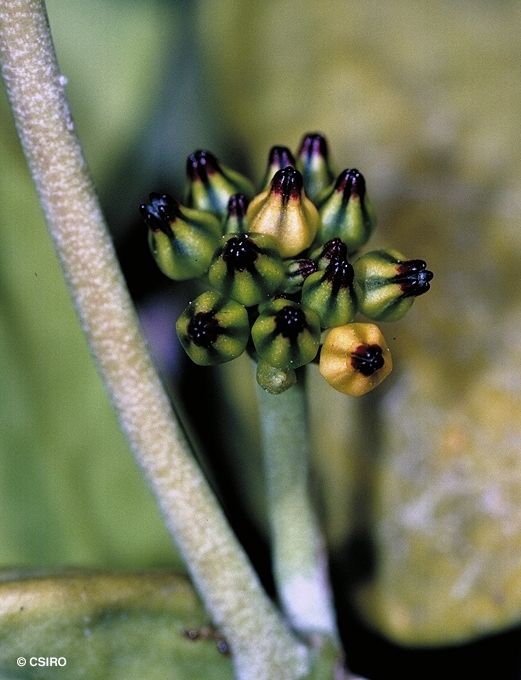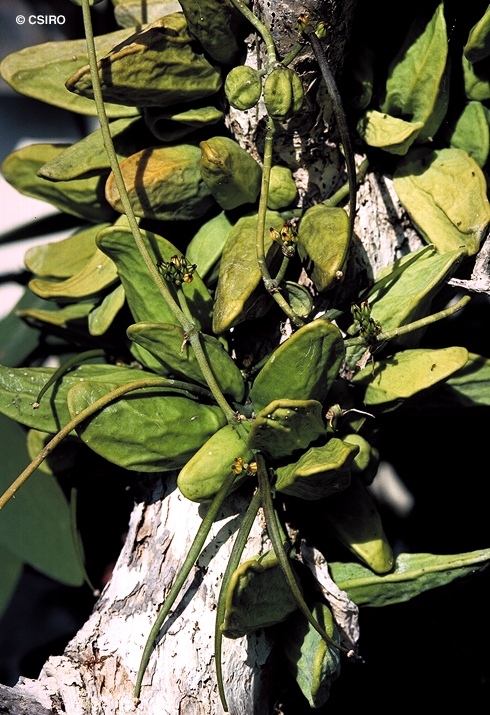Australian Tropical Rainforest Plants - Online edition
Dischidia major (Vahl) Merr.



Merrill, E.D. (1917) An Interpretation of Rumphius's Herbarium Amboinense : 437.
Rattle Skulls
A slender vine not exceeding a stem diameter of 2 cm. Usually found growing as an epiphyte on the stems of trees.
Twigs, petioles and leaves produce a milky exudate. Two types of leaves are usually produced on each plant, all are thick and fleshy. Normal leaves are +/- flat with the leaf blades about 15-20 x 10-15 mm with petioles about 2-3 mm long. The other leaves produced are shaped like a human tongue and are about 35-70 x 15-30 mm, are +/- hollow and are appressed to the surface of the substrate on which the plant is growing. The tongue-shaped leaves are usually hollow and inhabited by ants. The inner surface is smooth and brown and roots are normally present in the hollows.
Inflorescence is a very compressed raceme resembling an umbel. Peduncles about 6 mm long, attached to the twigs or stems between the points of attachment of each pair of petioles. Pedicels about 3 mm long. Calyx lobes about 0.8-1 mm long, a pale flat gland visible on the inner surface where calyx lobes join. Corolla urn-shaped, about 3-4.5 x 2.5-3.5 mm. Corolla mainly yellow or orange, lobes reddish. Corolla tube about 2-3 mm long, inflated about the middle. Corolla lobes about 1-1.5 mm long. Corolline corona consisting of 5 bifid strap-like structures about 1-1.5 mm long. Carpels free at the base but fused together towards the top. Pollen aggregated in pollinia. Pollinia solitary in each anther locule. Ovules numerous in each carpel. Stigma mitriform, protruding beyond the anthers.
Fruiting carpels usually paired, each carpel about 7-8 x 0.3 cm. Seeds about 3 x 1 mm. Plumes about 10-12 mm long.
Features not available.
Occurs in CYP and NEQ. Altitudinal range quite small, usually being found close to or slightly above sea level. Grows as an epiphytic vine in open forest, vine thicket, swamp forest and rain forest. Also occurs in New Guinea and other parts of Malesia.





